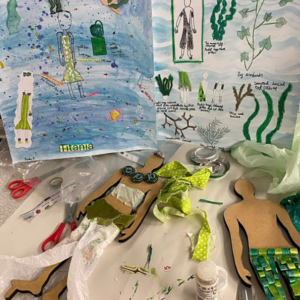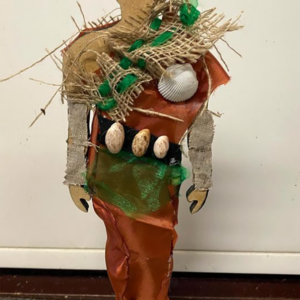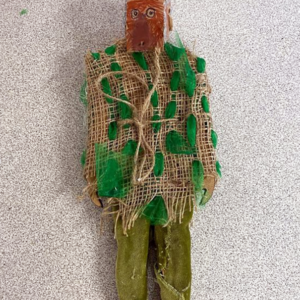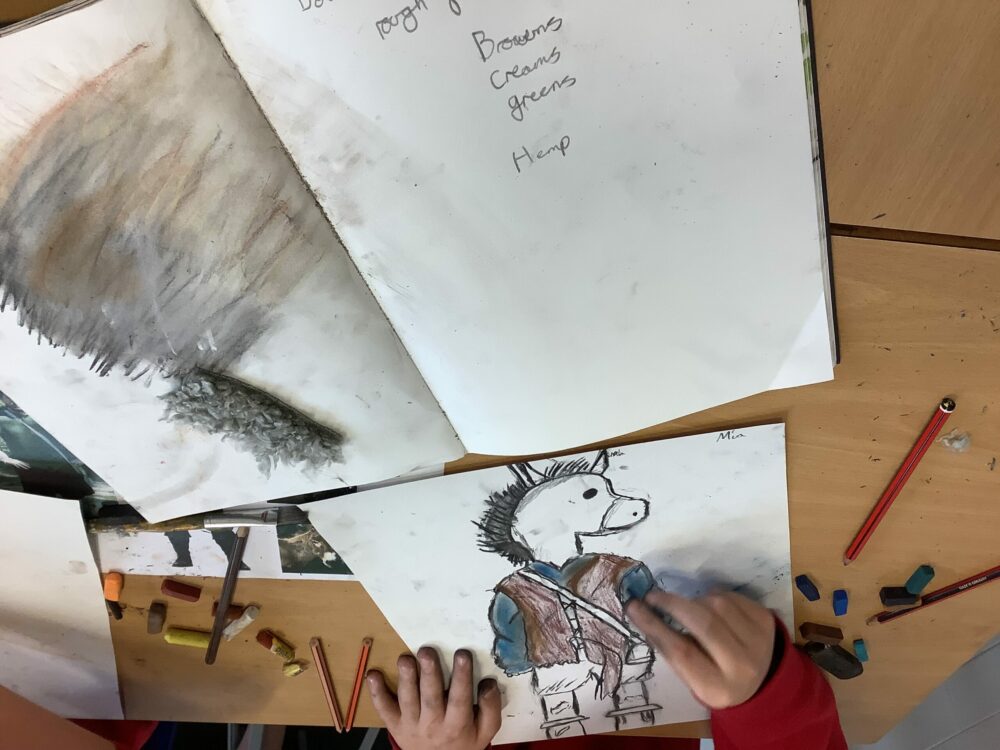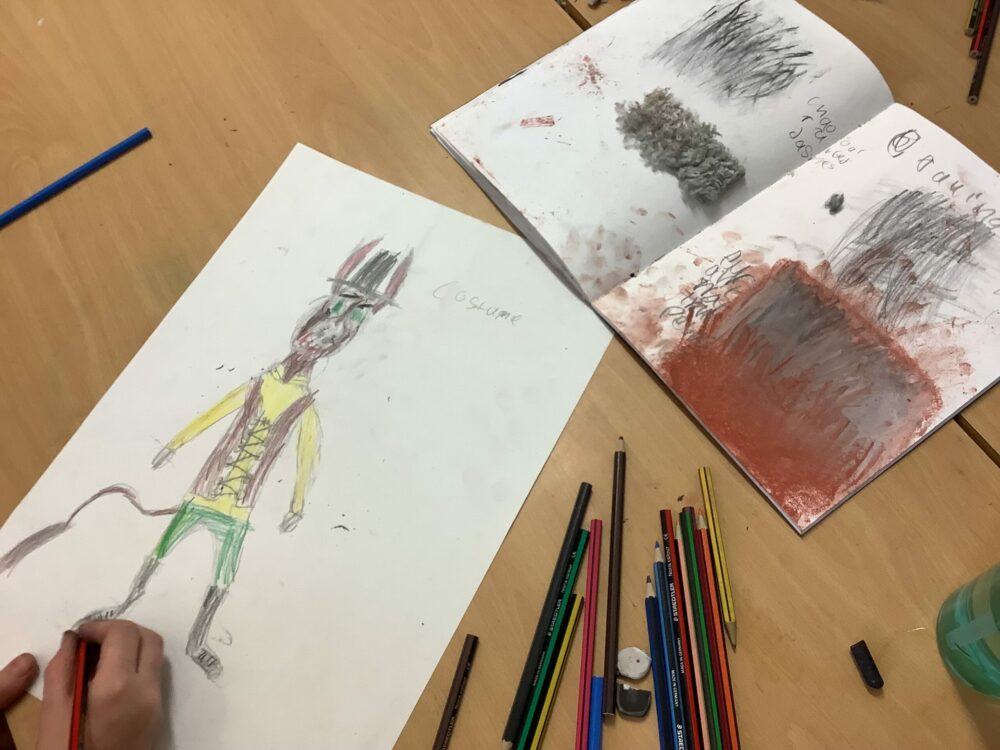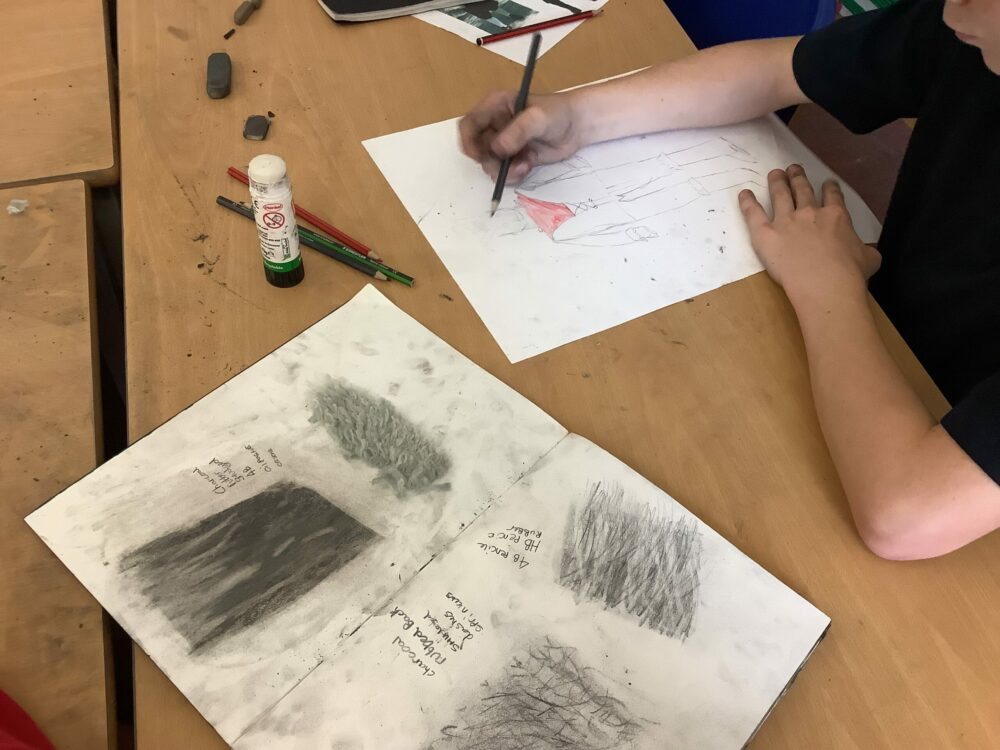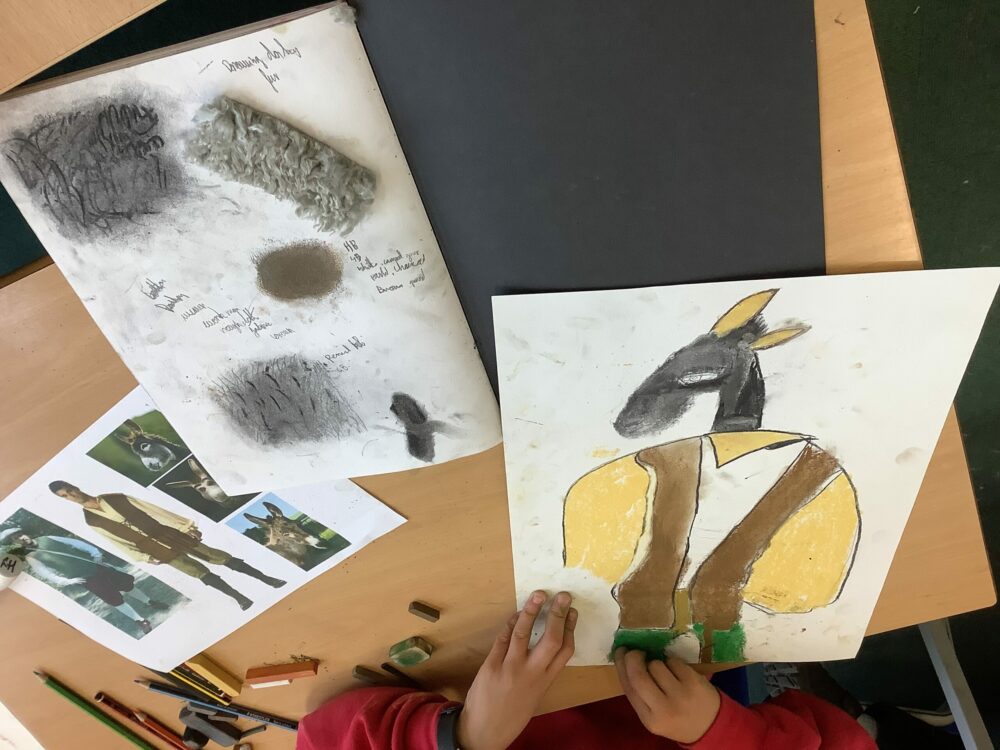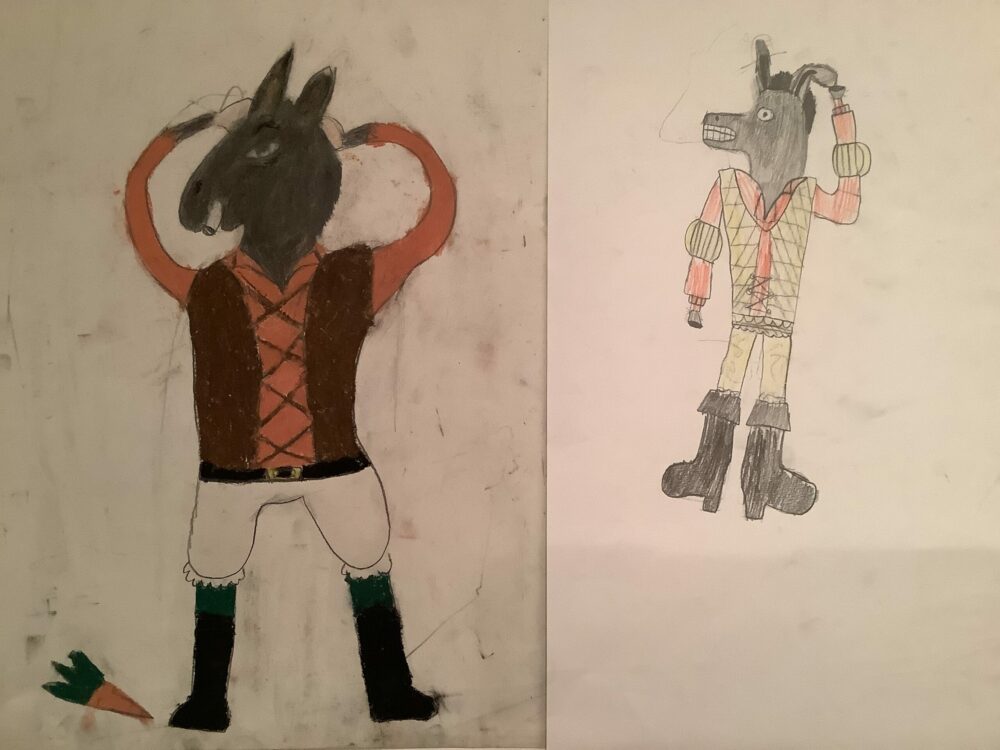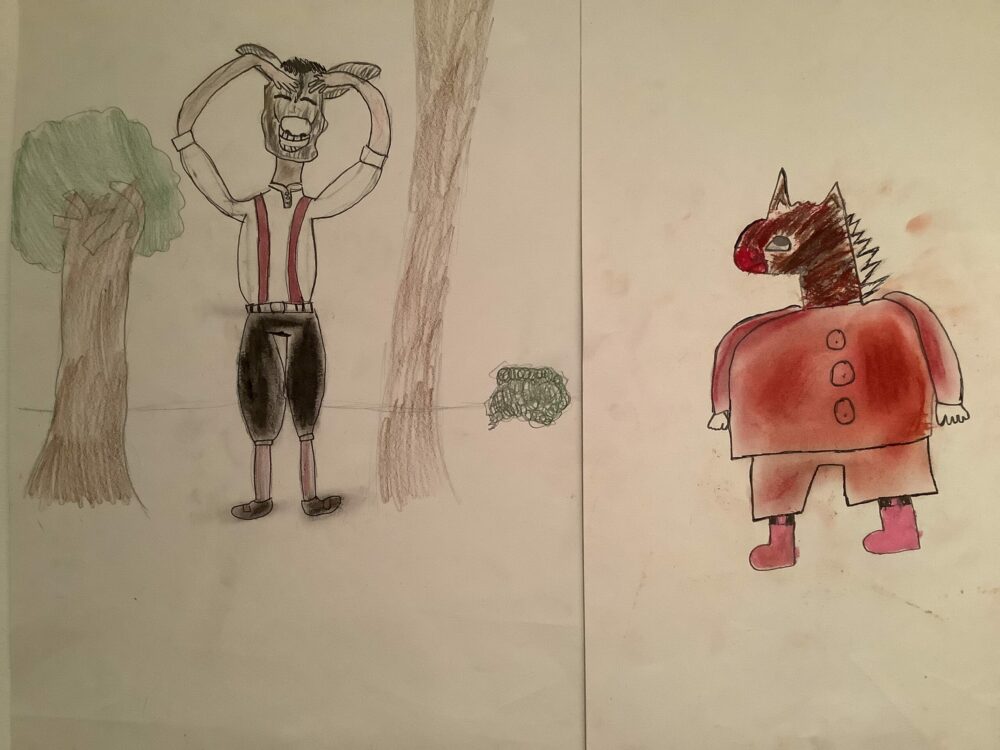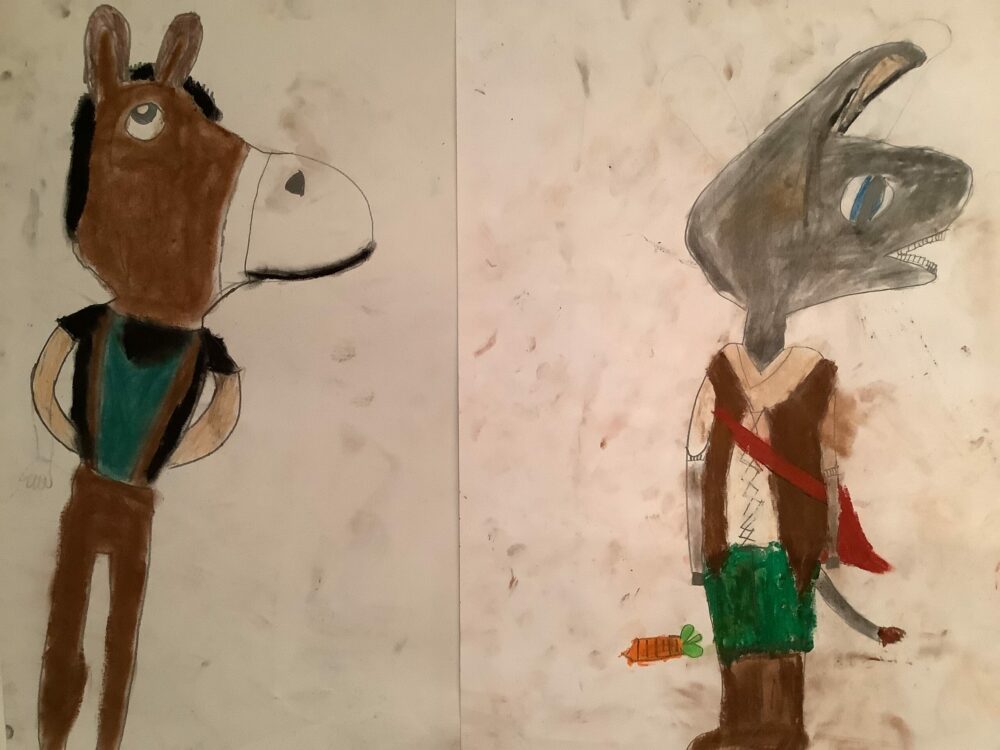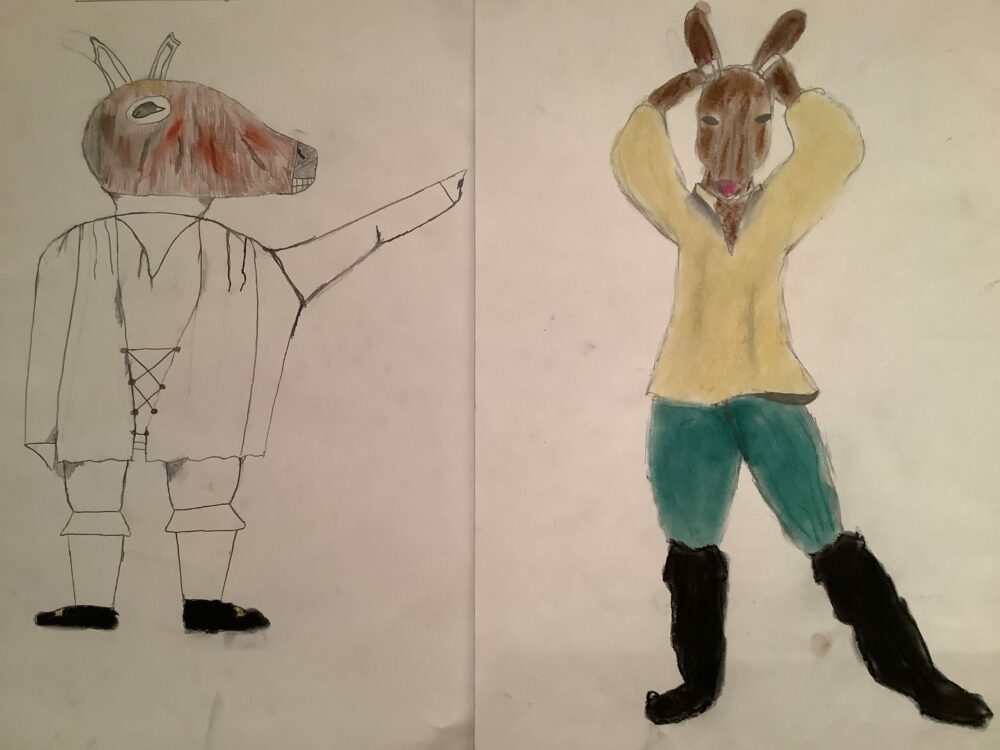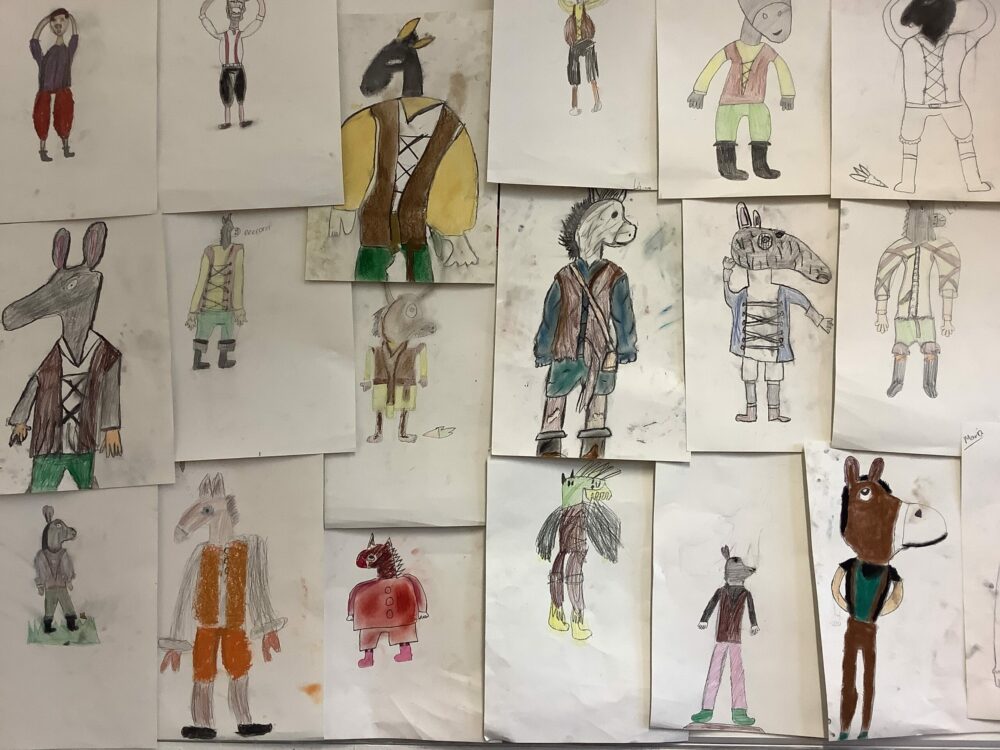Exploring A Midsummer Night’s Dream: Costume Design for Bottom
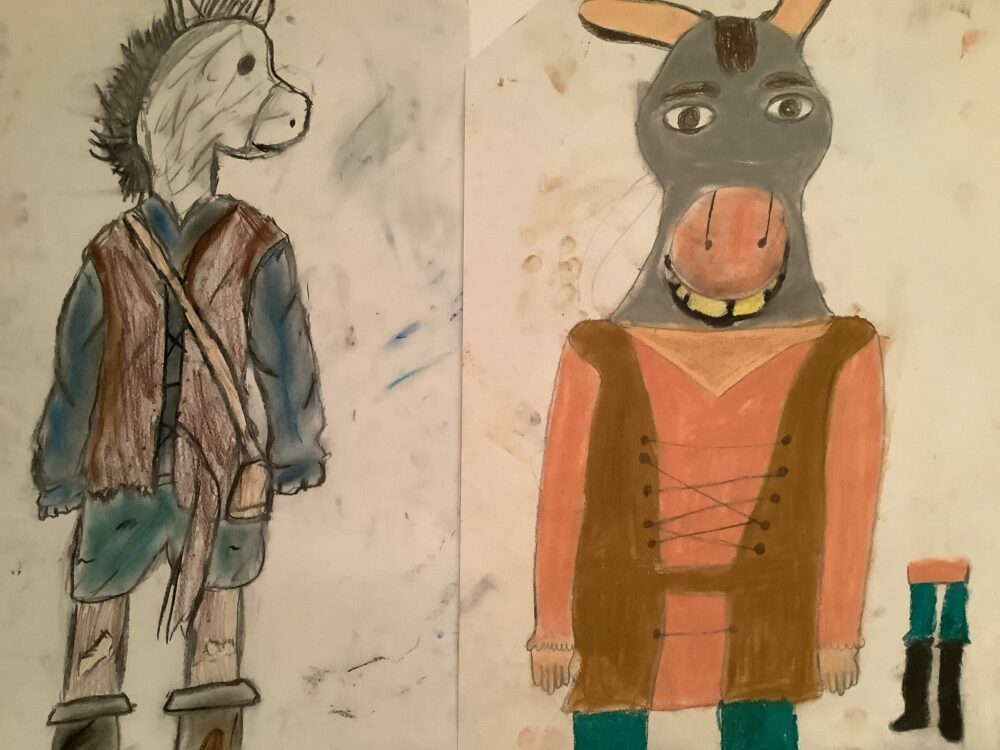
This series of six sessions explores Shakespeare’s A Midsummer Night’s Dream through art and is aimed at upper KS2 children (Years 5 and 6) although could be delivered to younger age groups with some simplification in terms of the use of text. The aim of the series is to introduce children to the work of Shakespeare in a fun and creative way.
In this second of six resources on Shakespeare’s A Midsummer Night’s Dream, we look more closely at the Mechanicals – and specifically, Bottom the Weaver.
The aim of this session is to practice drawing the texture and colour of faux fur before moving onto designing a costume for Bottom, with his Donkey’s head – and with inspiration taken from the historical dress of the Elizabethan rural working class.
Go back to session one here.
Session Two: Costume Design for Bottom
Warm up: 15 minutes
Main Activity: 45 minutes
Materials Needed: Sketchbooks or A3 drawing paper, drawing pencils, pastels, coloured pencils (particularly brown and grey hues), ideally some good quality faux fur! Alternatively, some high-quality images of animal fur/dander, finally some source material showing how the Elizabethan working class would have dressed.
Focus Theme/s: Love and Illusion
Time to Warm Up! Observational drawing of fur.
If you are not able to use faux fur for this warm up, use some high-quality photos of animal fur, (particularly that of donkeys!) to help with this warm up. We’re going to think about how we can use line and marks to create the look of animal fur. This is a great way to closely observe a material and explore which drawing materials work best for re-creating the tone and texture of fur on the page.
Take your paper or sketchbook. Look firstly at your source material and observe its details and quality. Perhaps make a small view finder by cutting a small square out of a piece of paper and holding it over the image of the fur, or the fur itself if applicable.
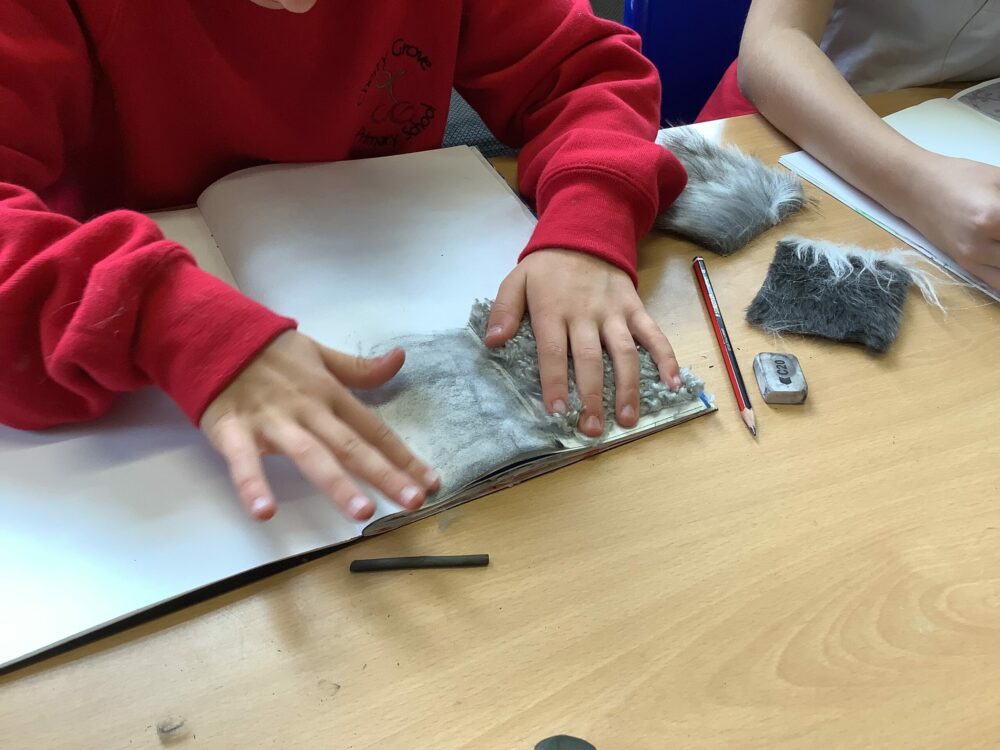
Choose your materials: This could be trying to find colour matches using coloured pencils or pastels, or you could focus more on texture and just use drawing pencils.
Working quite small to begin with, make an observational drawing of the fur.
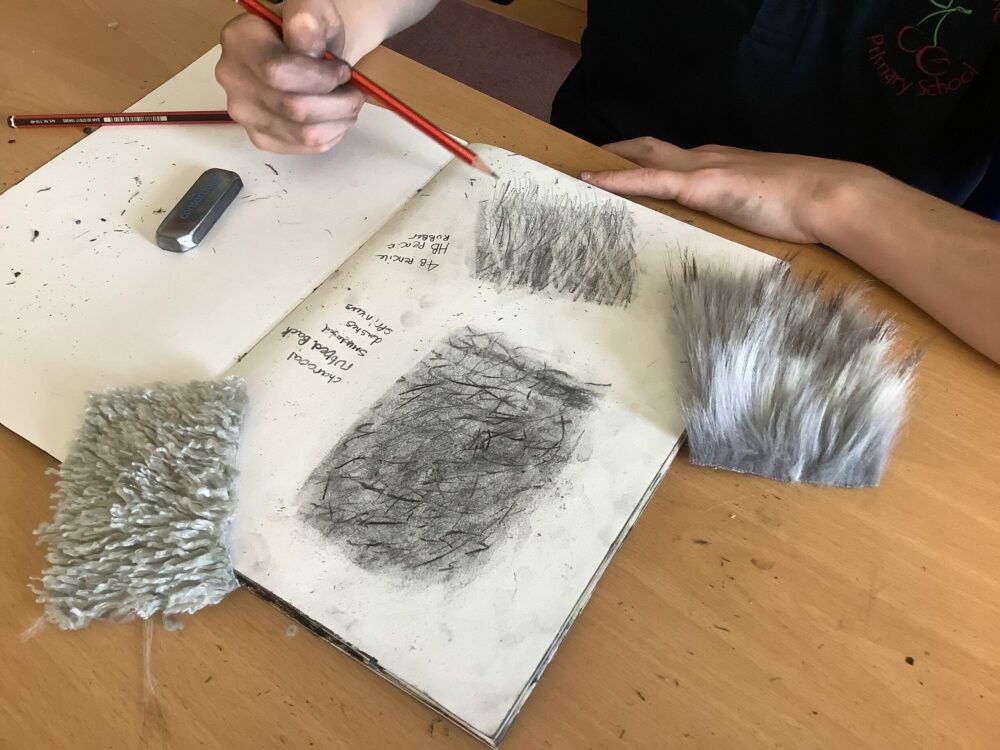
After a few moments, try working a bit bigger. You can use the same piece of paper for this and it doesn’t matter if the drawings overlap.
Try building up the layers, seeing how they interact and the depth they create. Are there any other details on the source materials you notice?
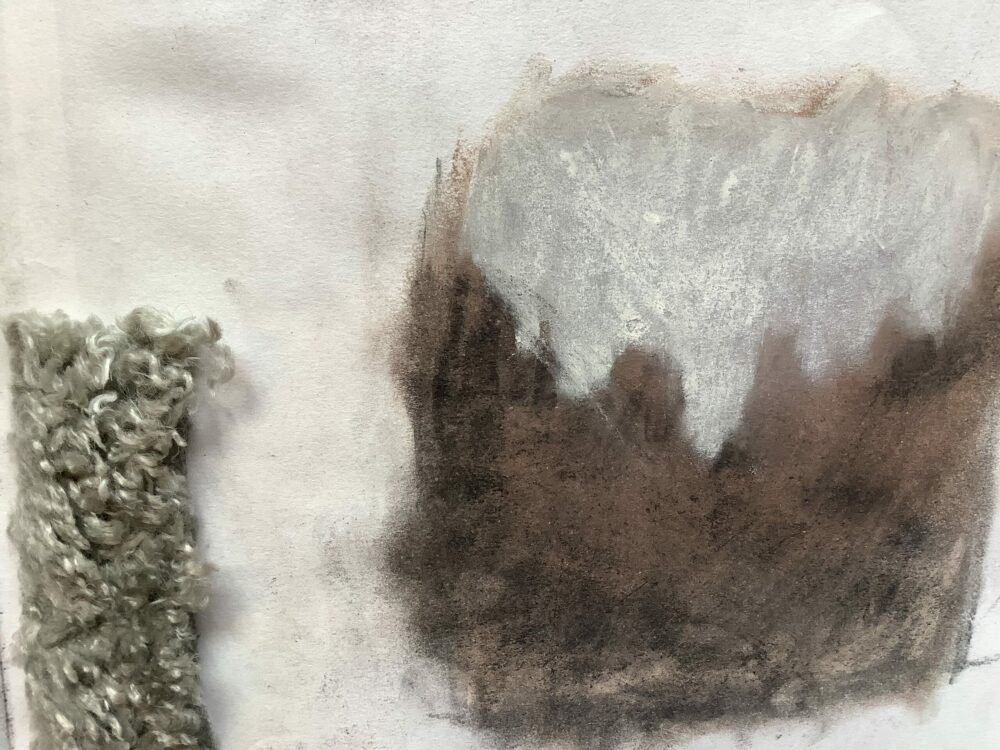
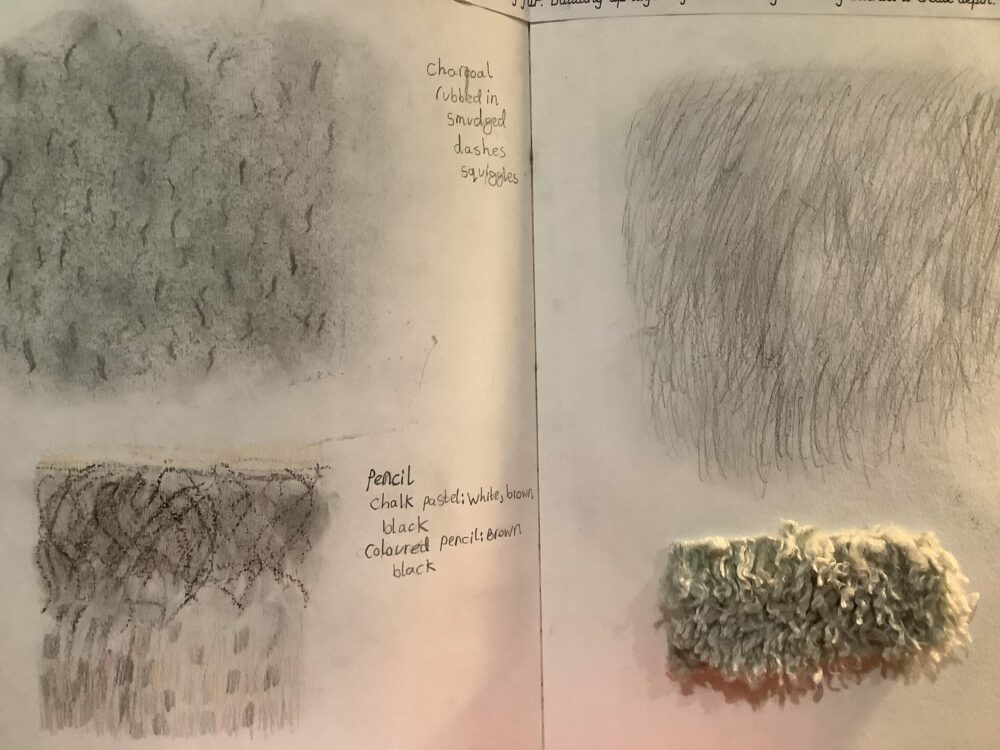
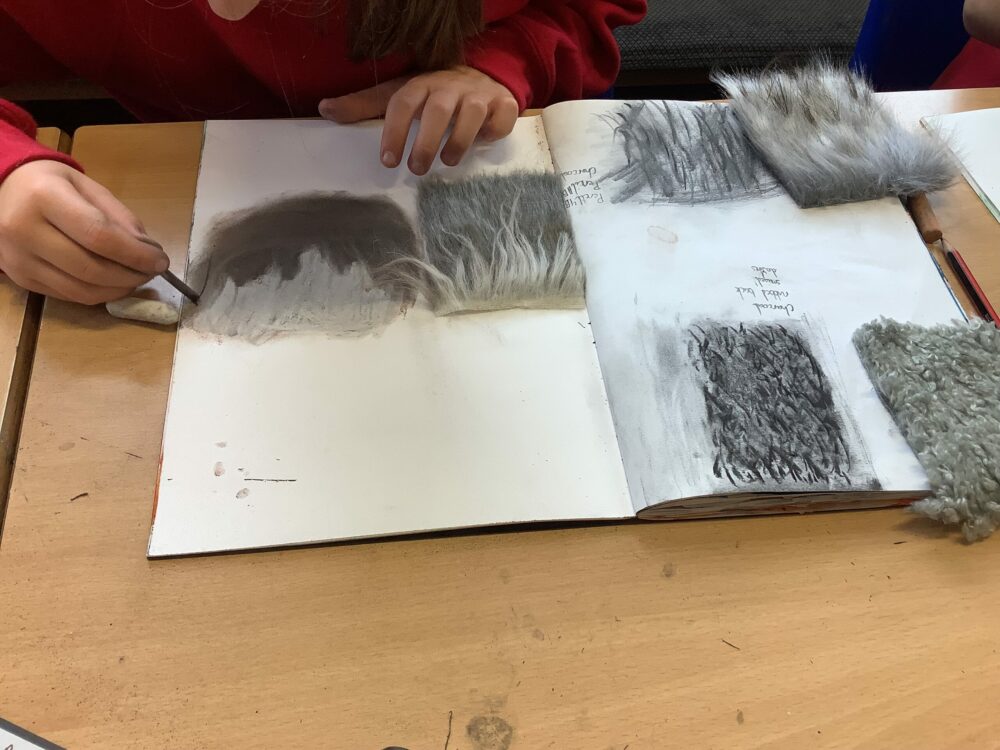
Starter Discussion:
The Workmen work together as a group to put on a play for the Athenian court. Despite being ridiculed by some of the other characters and even described by Shakespeare as ‘clowns’ (stage direction at the start of Act 3) – the Workmen are honest men with good intentions.
The Workmen’s simplicity makes them an easy target, and when Puck casts a spell on Bottom to make him have a Donkey’s head it reflects his opinion of their stupidity.
When Puck stumbles across the Workmen rehearsing their play near to where Queen Titania is asleep, he is immediately curious and finds their activity funny:
‘What hempen homespuns have we swaggering here,
So near the cradle of the fairy queen?
What, a play toward? I’ll be an auditor.
An actor too, perhaps, If I see cause’.
What do you think Puck means by calling the Workmen ‘hempen homespuns’ ?
Context:
Each of the workmen is described by his name and his trade. Some of the trades are not considered common or well known to us today but would have been common in Elizabethan England.
Check your understanding of their trades below:
Bottom – A Weaver
Peter Quince – A Carpenter
Francis Flute – A Bellows Maker
Tom Snout – A Tinker
Snug – A Joiner
Robin Starveling – A Tailor
The Workmen’s rehearsal is of the play ‘Pyramus and Thisbe’. The story of this ‘play within a play’ isn’t crucial to the plot of A Midsummer Night’s Dream, but the way in which the Workmen chaotically rehearse it in Act 3 Scene 1 is very funny.
It is during this scene that Puck casts a spell on Bottom the Weaver when he momentarily goes ‘offstage’ and transforms his head into that of a donkey. When Bottom returns ‘onstage’, the other Workmen are immediately terrified and think he has been turned into a monster. They flee, leaving Bottom puzzled and alone, and thinking his friends are playing some sort of practical joke on him.
Moments later, he walks into a part of the forest where Queen Titania lies asleep. With Puck’s magic also cast on her to fall in love with the first thing she sees, she does just that when she wakes.
Main Activity: Designing the character of Bottom
Take a piece of A3 cartridge paper and have a sketchbook or separate piece of paper to hand.
You’re going to imagine who Bottom the weaver is, and how he might have looked with a Donkey’s head. You might like to imagine you are a costume designer creating the designs for a performance of A Midsummer Night’s Dream and your job is to communicate his character through his costume.
Begin by making some rough notes on who Bottom is. His job is a Weaver – do you think this makes him a wealthy member of society? Consider how his clothes would differ from those of the Athenian Court. Puck’s description of all the Workman as ‘hempen homespuns’ relates to the fact they are from the poorest section of society. They would have been uneducated and a world away from the wealthy Athenian court.
Look at some source material showing how the Elizabethan working class would have dressed and observe the colours and types of fabrics. Use the source material of Elizabethan clothes as inspiration but try not to copy it exactly. This is about you developing your own creative response to the character Bottom.
Begin to draw what you think Bottom looks like, complete with Donkey’s head. If you need some help reminding you how the draw the human figure you could look back at your Athenian portraits from session 1.
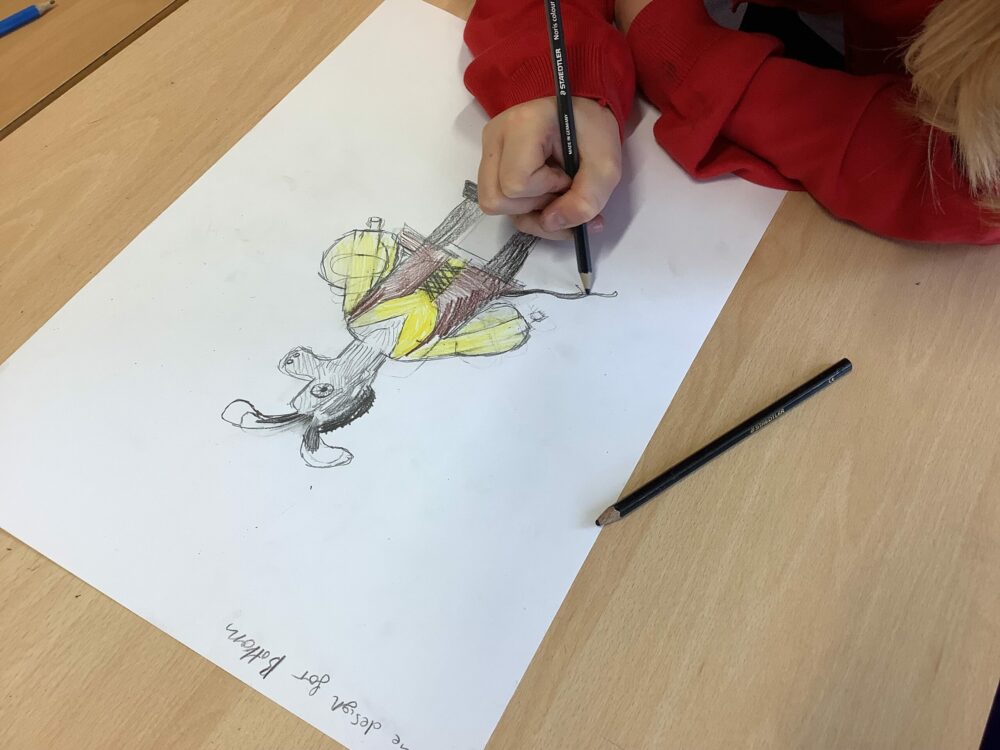
Pay close attention to his Donkey’s head and use the studies of fur you did to help with this. You might also like to look at images of donkeys to help you.
Think about how Bottom is standing. Is he clutching his new donkey’s head in alarm? Is he laughing? Is he looking around him trying to locate his lost Workmen friends?
Use colour to bring out his costume. Remember that in Elizabethan England, the working classes wouldn’t have had clothes made from opulent or rich fabrics – but would have had simple clothes made from rough cotton and in naturalistic ‘earthy’ colours.
You may find it useful to use some images of clothing from the era and spend some time discussing its features. If you have time, you could include a session on designing a costume for a member of the wealthy Athenian court to create contrast.
Invite the children to consider what facial expression and posture they want their drawing of Bottom to be exhibiting. In the play, he is a comical character who is easily led and often poked fun of!
Reflection:
Pin up your drawings or take it in turn to hold them up. Take a moment to look at each other’s work? Would anybody like to share some thoughts on what they see? See if you can practice some peer feedback.
Think about the materials you chose – what did you enjoy about using them? Can you think of some other materials that you would like to use?
If you don’t finish your drawing during this session perhaps there will be time to come back to it another day.
Move onto session three here.
This is a sample of a resource created by UK Charity AccessArt. We have over 1500 resources to help develop and inspire your creative thinking, practice and teaching.
AccessArt welcomes artists, educators, teachers and parents both in the UK and overseas.
We believe everyone has the right to be creative and by working together and sharing ideas we can enable everyone to reach their creative potential.
See This Resource Used in Schools...
